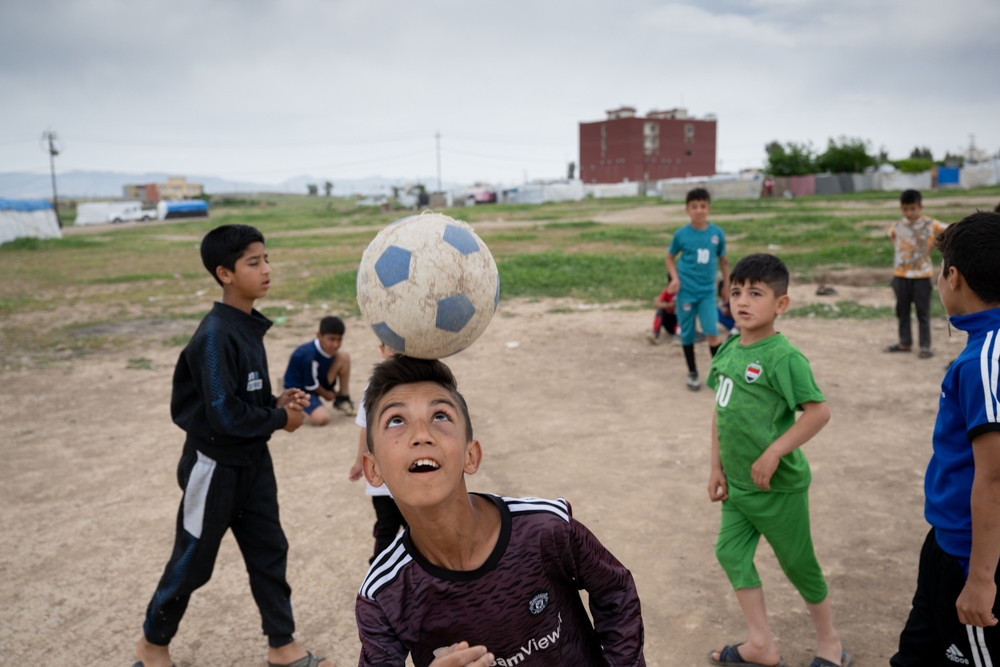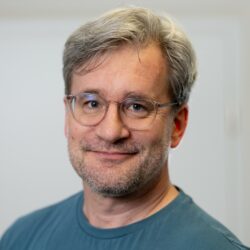
Kristian Skeie

PX3 Prix de la Photographie Paris 2023 – State of the World
Curatorial Selection – Yazidi football stars.
Q: Can you briefly tell us about your background and what inspired you to pursue photography?
I am a Norwegian, Swiss based photographer, and a contributor to Keystone SDA Photo Agency, working with a number of organisations and publications as well as private clients.
Explored topics have focused on post war humanitarian issues in places like Bosnia and Herzegovina, Rwanda and Iraq. Other topics have been on sports, particularly football where I work with UEFA, science and food as well as medical research. The watch industry in Switzerland, with its tradition and craftsmanship is also an area I have covered.
In addition to photography, I run regular photography workshops throughout Europe and elsewhere. I also teach photojournalism at Webster University in Geneva, Switzerland.
Q: What drove you to submit your work to the Px3 State of the World competition and your thoughts on how being in the curatorial selection impacted your artistic journey?
I continuously work on different projects, should I have something that I feel is “complete” and then there are competitions ready for submission, I sometimes submit. I have done that with the Px3 a few times and have been recognised several times. I always look at the submissions at the Px3 as there are great work coming through! I guess it somehow helps to see whether or not your work is relevant. I felt that my recent work from Iraq was fitting well with the topic “State of the world.
Q: Could you describe any challenges you faced while capturing this moment (winning image/s)?
The series that was selected to be part of the exhibition is about the Yazidi community who survived the genocide against them by Isis in 2014. I visited them, with a colleague, in the early days of 2016 once the city of Sinjar (The main city where the Yazidi population had been “freed”. It was horrible and people were living in extremely poor settings. Just about everybody had lost family members and friends, many were still missing and kept hostages. My story is on the human side and how people have been able to continue their lives despite these extreme experiences. The visit this time was something I wanted to do for a while but it had not been possible during the covid period. A possibility came up last spring. The situation was similar, 7 years later. There were fewer refugee camps. Still, it occurred to me that many of the children we met had been born into this situation where people were living in temporary living conditions. It is illegal to build permanent settlements, but people cannot move back to their destroyed and still unlivable houses from the past. The series recognised by Px3 is about the children still having fun, playing football, just like kids would do just about anywhere in the world. The contrast is knowing the hardship these children are living, still, they do not even properly know it- they have in fact never known any other way!
Q: What, in your opinion, are the most important factors in creating great images?
For me, the key to good photography is knowledge and to know what you are photographing. Images, and particularly a series of images, is a universal language. Knowing how to articulate this language can be very powerful. And, this can be done well if your knowledge on the topic is good- research on the topic is vital!
Q: What do you find to be the most challenging aspect of photography?
The challenge is probably different if you are making a living out of your work or not. Getting the mandates and getting the work can be challenging for photographers today. Timing can be another one- sometimes, particularly newsworthy stories can have very short life span and be relevant on a certain date or within a very short period of time- hence, getting the story out!
Q: What motivates and drives your photography?
Connecting with people, learning and being curious can help motivation. I believe I am fairly self motivated and don’t really lack any drive when it comes to work.
Q: What’s next for you in your career as a photographer?
My work on “Life After Genocide” continues, this is something that I will follow up in locations where I have already worked in order to continue to follow the developments there and possibly get to know new people in new places. I am off to Bosnia and Herzegovina soon following up on previous work done there in the past. Despite the famous slogan “Never Again”, genocide happens just about everywhere somewhere on our troubled planet.
Apart from that, I am following football and work with documenting what happens in and around the game. Again, more stories about people and what motivates us in very different circumstances. This is work I do on a daily basis as well as developing stories around the game.